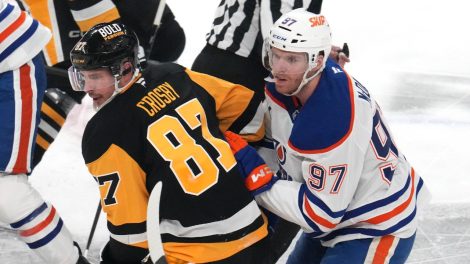When the power brokers of Finnish hockey gathered together seven years ago, the future looked dim.
For the third straight NHL draft, not a single Finnish prospect was taken in the first round. The country’s junior hockey team was also flailing, while chief rival Sweden was seemingly bursting with quality young talent.
Some 300 officials, including coaches, managers, scouts, media, trainers and government personnel, assembled at the Finnish Sports Institute in 2009 to figure out how to fix the problems.
“We wanted to make a change,” recalled Columbus Blue Jackets general manager Jarmo Kekalainen.
That change is now reaping major dividends. For the first time ever, two Finnish players are expected to be picked in the top three of Friday’s NHL draft, with Patrik Laine and Jesse Puljujarvi exemplifying the growing trend of elite young Finns.
Olli Juolevi of the London Knights could be the third player picked in the top-10, another potential first for Finland.
“There are a lot of young guys coming up right now,” said Florida Panthers centre Aleksander Barkov, already a star himself at age 20.
Erkka Westerlund, then the head of coaching and education at the Finnish Ice Hockey Federation, said co-operation was the key to turning things around.
“We have quite a small country and the only way we can survive is that we work together,” he said.
Two main priorities emerged from the 2009 summit.
First, officials wanted to encourage more personality from their players and allow individual skills to shine through, as opposed to squeezing them in the name of team success. The Finns always had hard workers who could operate as cogs in a wheel, but not enough stars like Laine.
“He can take the puck from all men and score,” Barkov said of Laine. “You need those kind of players.”
Second on the list was improved coaching at the youth level.
A former national team head coach nicknamed “The Hockey Professor,” Westerlund said 28 full-time skill coaches were hired in 2012 to assist volunteers.
Kekalainen celebrated the change.
“Shouldn’t we be paying and trying to get the best coaches possible to that level to ensure that those guys get brought up the proper way as hockey players and actually learn how to play the game the right way instead of learning how to skate, stick-handle and all that?” Kekalainen asked.
Finland sought to improve how it taught the ins and outs of the game at an age when it would be best absorbed. The shift sped up the development curve with Barkov, Laine, and Puljujarvi not only playing but thriving in Finland’s top league as teenagers.
Only recently turning 18, Laine was named playoff MVP in leading Tappara Tampere to a championship.
“Very rarely have we seen that before,” said Kekalainen whose Blue Jackets pick third overall at Friday’s draft.
Even Teemu Selanne, arguably the greatest Finnish player, wasn’t playing at the highest levels when he was that age, nor was he physically ready then for the NHL as those like Barkov, who posted 59 points this past season.
For Kekalainen, that’s the biggest change in today’s Finnish prospects: they’re not only skilled, but big, imposing forces at a young age. Their ceilings are inevitably higher.
Barkov may be the truest representative of all that’s changed in Finnish hockey.
Not only is he a skilled towering presence down the middle at six foot three and 213 pounds, but he’s been well-taught from a young age. He learned the game from his father, Aleksander Barkov Sr., a long-time player in Finland and Russia.
“He basically told me what to do on the ice: when I have the puck, what I have to do, and when I don’t have the puck, what I have to do,” Barkov said. “He’s watching every game and calling me after the game and telling me what I can do better.”
It was that kind of influence Kekalainen and others believed could be translated to Finland as a whole. Physical skills might be taught at a later age, but developing instincts needed to come early, especially for Finland, where the population is only about six million.
This weekend’s draft will only cap a special year for Finnish hockey. The country won gold at the world junior championships and silver at the world championships with a youthful squad led in scoring by Laine.
Barkov believes it’s indicative of what’s to come.
“Of course we need good example(s) and good leaders to be on the team like (Mikko) Koivu, (Jussi) Jokinen and those kind of guys,” said Barkov, “but there’s a pretty bright future in Finnish hockey.”








